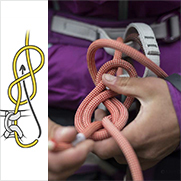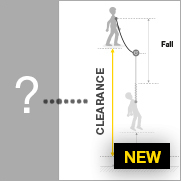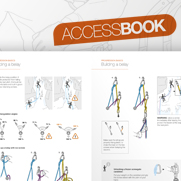Rescue: backing up a drop-loop haul or reeve with the ASAP LOCK
The ASAP LOCK (combined with the ASAP’SORBER AXESS) provides effective redundancy for complex haul setups with a bottom pulley: e.g. drop-loop hauling techniques with I’D or MAESTRO or hauling techniques with the REEVE.
Warnings
- Carefully read the Instructions for Use used in this technical advice before consulting the advice itself. You must have already read and understood the information in the Instructions for Use to be able to understand this supplementary information.
- Mastering these techniques requires specific training. Work with a professional to confirm your ability to perform these techniques safely and independently before attempting them unsupervised.
- We provide examples of techniques related to your activity. There may be others that we do not describe here.
For these techniques, installing one or two ASAP LOCK serves two purposes:
1) Fall arrest in the event of loss of control of the descent by one of the operators.
2) Fall arrest in the event of rope failure on either side.
Limits of this technique:
1) Any rope failure in such a system is a serious incident, potentially leading to an extremely complicated situation:
Even though the ability to stop the fall using ASAP LOCKs is a major advantage, the utmost care must be taken to avoid this type of incident. In particular, the rockfall risk in the critical zone described below must be considered: this exposes both the rescuer and the victim to rockfall, and could thus lead to using a different technique to carry out the rescue.
2) The rope segment between the two ASAP LOCKs, and several meters of rope above the devices, are especially vulnerable:
A rope failure in this zone would result in the rescuer and the litter being suspended on one ASAP LOCK located very close to the end of the cut and frayed rope, with no stopper knot.
3) Wear issues with the ASAP LOCK and/or the bottom pulley.
When the rope is moving, one of the two ASAP LOCKs moves along with it until stopping against the pulley. This can increase the wear on both devices.
Using one or two rigid rope protectors can address these issues:
- Reduces the risk of rope failure in the critical zone.
- Separates the ASAP LOCK and the bottom pulley to prevent rubbing
- Increases the length of the rope between the two ASAP LOCKs (while protecting it): in the event of rope failure, this will leave enough rope to quickly tie a stopper knot below the ASAP LOCK, thus securing the rest of the maneuver.
Use a rigid tube about 25 cm in length, of a diameter large enough to stop against the side plates of the ASAP LOCK and the pulley, while allowing the rope to run without friction.
WARNING: a non-rigid tube can interfere with the devices to the point of blocking the maneuver.
Carry out tests of the entire maneuver with the selected tubes, in training sessions, before any use in a real situation.








